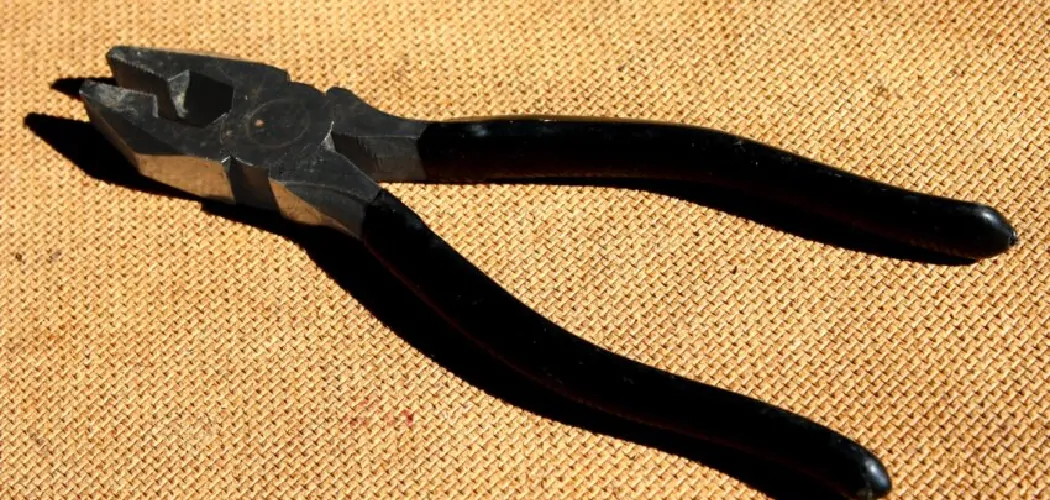Linesman pliers are used for gripping and holding objects, so it’s important that they are sharpened correctly in order to provide the best possible grip.
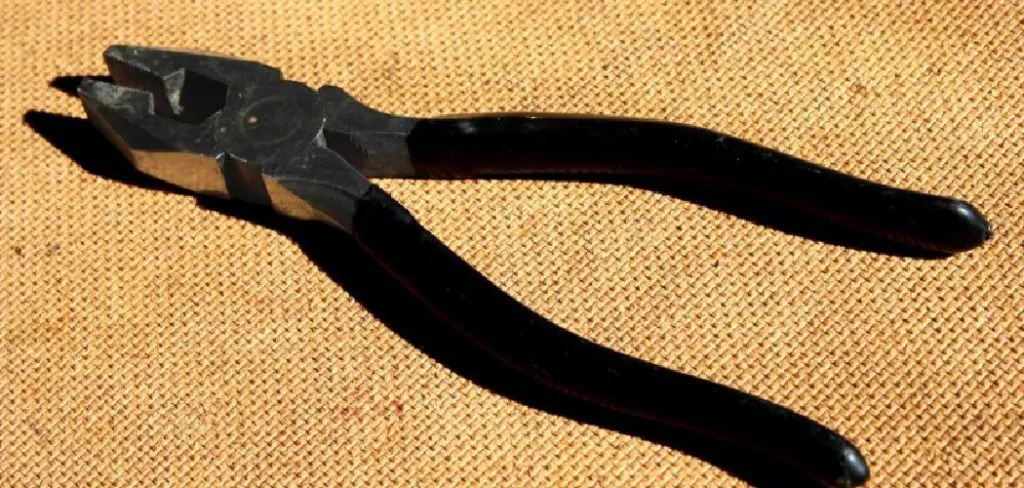
In this blog post, you will learn how to sharpen linesman pliers. You will also learn about the different types of honing stones available and which one is best for you. So, whether you are a beginner or an experienced DIYer, read on for tips on how to sharpen your linesman pliers like a pro!
What is a Linesman Plier?
Before we dive into the sharpening process, let’s first understand what a linesman plier is. A linesman plier, also known as side cutting pliers or combination pliers, is a hand tool that is commonly used for gripping, bending and cutting wires. It has a pivot point between the two handles which allows for increased pressure to be applied at the jaws.
Why Sharpen Your Linesman Pliers?
Over time and with frequent use, the cutting edges of linesman pliers can become dull. This can make it difficult to grip onto small objects or wires, leading to frustration and potential damage to the tool itself. By sharpening your linesman pliers, you not only restore its sharpness but also extend its lifespan.
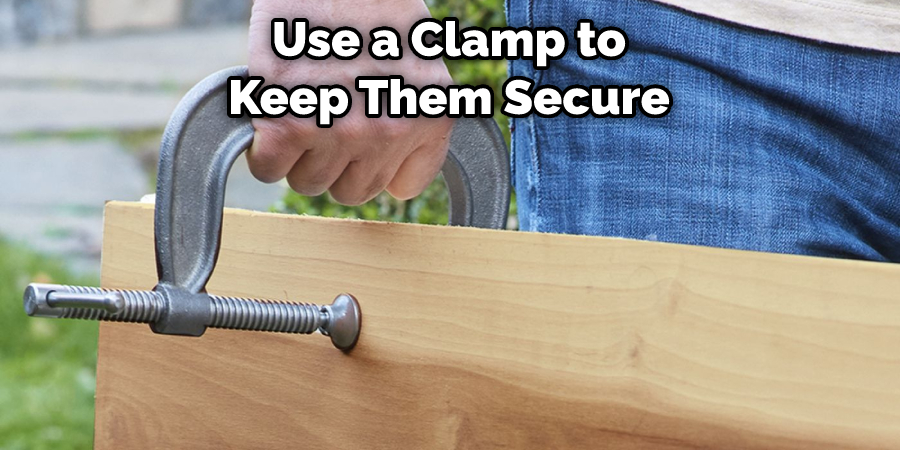
Is It Possible to Sharpen Wire Cutters?
Yes, it is possible to sharpen wire cutters. This process involves two steps: sharpening the cutting edges and properly aligning them with each other. When sharpening the blades of wire cutters, use a metal file or stone that has been soaked in oil for some time. The file or stone should be held at an angle so that only one side of the blade is being worked on at a time.
Make sure not to over-sharpen, as this can make the blades too thin and brittle, resulting in poor performance and potential breakage. After filing both sides of the blades, use fine-grain sandpaper to remove any burrs from the previously filed surfaces before proceeding to alignment. Alignment involves adjusting the handles until the blades are parallel and facing each other.
Once this is done, press the two blades together firmly to ensure proper alignment. The last step is to lubricate the cutting edges with light oil before use. With these steps in mind, you can be sure that your wire cutters will perform their best for many years to come!
Necessary Materials:
Linesman Pliers:
The tool you want to sharpen
Honing Stone:
A flat, abrasive stone used to sharpen the cutting edges of your pliers. Available in different materials such as diamond, ceramic and natural stones.
Oil:
Used to lubricate the stone and prevent metal particles from clogging its pores. Suggested oils include mineral oil, honing oil or even cooking oil.
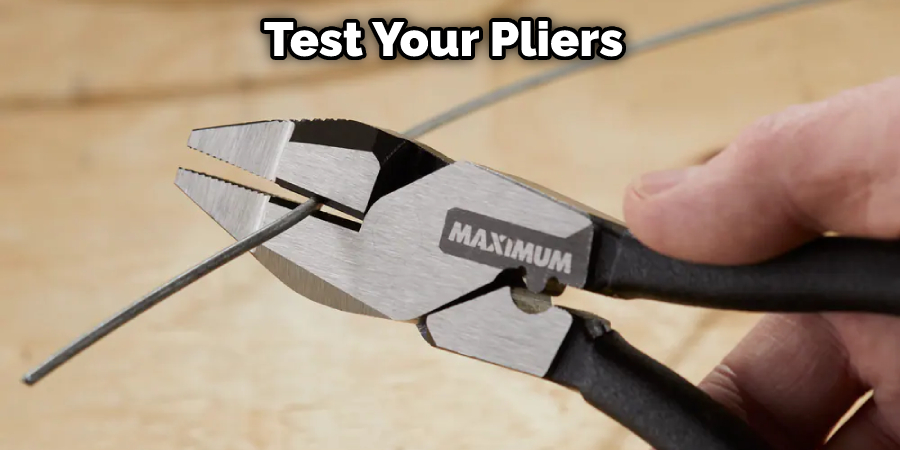
Safety Gear:
Wearing gloves and safety glasses is recommended to protect your hands and eyes from any metal particles during the sharpening process.
10 Steps How to Sharpen Linesman Pliers
Step 1. Place the Pliers in a Vise:
To start off, place the pliers into a vise or clamp. Make sure that the pliers are tight and secure before you begin to work on them. You can use locking pliers if you need more security while working. If you don’t have a vise, you can still sharpen the pliers using other methods. While it is not required, using a vise will make the job easier and safer.
Step 2. Clamp the Pliers:
To ensure that the pliers stay in place, use a clamp to keep them secure while you work. Clamps help provide leverage and stability when sharpening the pliers, ensuring that you don’t accidentally cut yourself or cause any damage to the pliers. If you don’t have a clamp, you can also use your hand to hold the pliers in place.
Step 3. Start Grinding:
Take a grinding wheel and start to grind on the cutting surfaces of the linesman pliers. You should use slow and steady movements while grinding to ensure that you get an even sharpening job. Make sure that all areas of the edges are getting ground evenly. If any part is too thick or thin, adjust your pressure accordingly to make it even.
Step 4. Use Sandpaper:
Once you’ve finished grinding with the wheel, switch over to sandpaper to smooth out any rough spots created by the grinder. Start with a finer grit and work your way up to a heavier grit until you reach the desired sharpness. If the pliers need a sharper edge, use a sharpening stone to get the perfect finish.
Step 5. Create Angles:
Using a flat file, round off any sharp angles on the handle of the pliers so they are comfortable to hold when using them. Be careful not to file too much; you don’t want to weaken the structure of the tool. Although this step is optional, it will help make the pliers more comfortable to use and last longer.
Step 6. Smooth Out Rough Areas:
Divide up the surfaces of your tools into sections, then take an emery cloth and lightly smooth over each section until it is even on the surface. You don’t want to remove too much material from the tool, so be careful when doing this step. This will help to prevent burrs from forming on the pliers, making them easier to use.
Step 7. Polish:
Use fine-grit sandpaper and begin polishing the tool until it is shiny. Make sure you go over each section evenly and consistently; otherwise, you may end up with an uneven finish. Once you are happy with your results, use a cloth to wipe away any dust or debris that has accumulated on the tool during the process.
Step 8. Test Your Pliers:
After finishing the sanding process, it’s time to test your pliers. Take some wire or string and see if the edges of the pliers can cut through it easily without any pulling or snagging. If there are any areas that are still dull, go back and sharpen them up with a grinding wheel until they’re razor-sharp. Make sure you test the pliers on a variety of materials to ensure they are sharpened properly.
Step 9. Apply Oil:
Finally, apply oil to all of the surfaces of your pliers using an oil-based lubricant or WD-40 in order to keep them protected and prevent rust or corrosion from forming on them. Wipe off any excess oil with a cloth, and you’re done! Your pliers should now be as good as new. While it may be a little intimidating at first, sharpening pliers doesn’t have to be difficult.
Step 10. Store Pliers Properly:
Once you are done sharpening your pliers, store them in a cool and dry area away from moisture or humidity. Keep them away from any other tools that could cause damage if they were to come in contact with the pliers. With proper storage and maintenance, your pliers should remain sharp for many years to come.
Following these steps on how to sharpen linesman pliers will ensure that your linesman pliers are always sharp and ready for any task. Remember to take proper safety precautions, such as wearing gloves and safety glasses, while sharpening your pliers. With regular maintenance and sharpening, you can prolong the life of your tools and have them perform at their best every time. Happy sharpening!
6 Things to Consider When Sharpening Linesman Pliers:
1. Angle of Sharpening:
The most important factor when sharpening linesman pliers is the angle at which you sharpen them. A good angle will help ensure that the pliers cut effectively and can reach into tight spaces. The right angle for sharpening pliers is typically between 25-30 degrees. It’s important to maintain consistency in the angle while sharpening for best results.
2. Quality of the File:
To get a good, sharp edge on your pliers, it’s important to use a quality file or grinding stone. Make sure you select one that is designed specifically for this type of tool to achieve the desired results. A low-quality file can cause scratches or dull the edges of your pliers, making them less effective.
3. Avoid Overheating:
When sharpening linesman pliers, it’s important not to overheat them, or else you risk damaging the metal and weakening its strength. If you notice that the metal is beginning to turn colors, take a break and let the pliers cool down before continuing. Try to keep the sharpening process as short as possible.
4. Check for Balance:

After the sharpening process is complete, it’s important to check that both sides of the pliers are balanced and even. This will ensure that they cut properly and don’t cause any injury during use. If one side is sharper than the other, use a file to even them out. While you’re checking for balance, also look for any signs of wear and tear.
5. Remember Safety Precautions:
Always remember to wear eye protection when sharpening linesman pliers or any other tool with moving parts, as small pieces of metal can fly off during the filing process. Additionally, wearing gloves can help protect your hands from getting cut during this task. It’s important to stay safe while sharpening your tools.
6. Regular Maintenance:
Regular maintenance is key to keeping your linesman pliers sharp and in good working condition. Make sure to inspect them regularly for any signs of wear or damage, and sharpen them as needed to maintain their effectiveness. With proper care, your linesman pliers can last for many years and help you complete tasks with ease.
By following these tips, you can keep your linesman pliers sharp and ready to tackle any job! Whether you’re a professional electrician or just do occasional work around the house, having a quality set of linesman pliers is essential to get the job done right. With proper care, these tools can last for generations!
Does Cutting Aluminum Foil Actually Sharpen Scissors?
The short answer is no. Cutting aluminum foil does not sharpen scissors. While it may temporarily improve the performance of a dull pair of scissors, the results will not be long-lasting and can actually damage the blades if done repeatedly.
To sharpen scissors effectively, you need to use an abrasive material like sandpaper or a honing stone. This will remove small burrs from the blade edges that are preventing them from making accurate cuts. The abrasive material needs to be used consistently and evenly along both sides of the blades to ensure they stay sharpened properly.
Do You Need to Take Help From a Professional?
If you are not confident in your ability to sharpen scissors properly, it may be best to seek help from a professional. They have the expertise and tools necessary to sharpen scissors effectively without causing damage.
Additionally, some high-end scissors may require special techniques or equipment for sharpening that only a professional can provide. This is especially important if the scissors are made of delicate or expensive materials.
In the end, it’s better to have your scissors professionally sharpened rather than risk damaging them by attempting to do it yourself. However, with proper knowledge and practice, anyone can learn how to sharpen scissors effectively at home. It just takes patience, the right tools, and a steady hand.
How Much Could It Cost?
The cost of sharpening scissors can vary depending on the type of scissors and the location where you seek professional help. Generally, expect to pay anywhere from $5 to $20 for a pair of scissors to be professionally sharpened.
If you are looking to purchase tools or supplies to sharpen your own scissors at home, the cost can range from $10 for basic sandpaper to $50 or more for high-quality honing stones. It’s worth investing in good quality sharpening tools as they will last longer and provide better results.
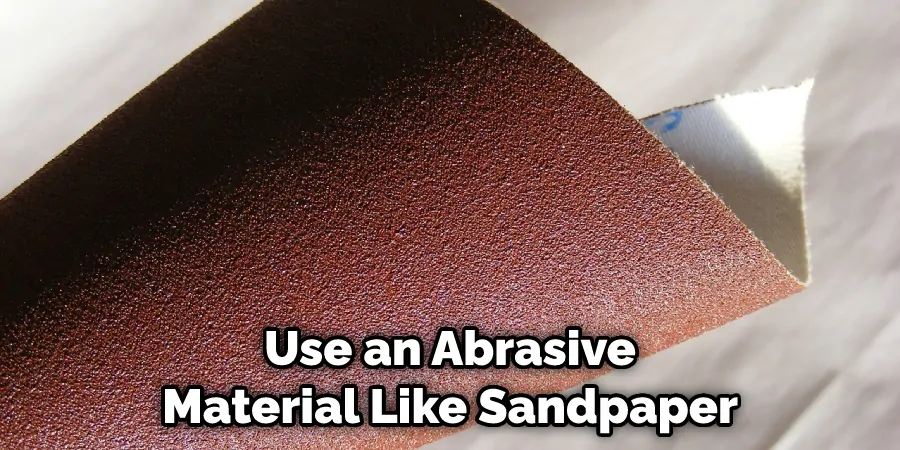
Frequently Asked Questions:
Q: How Often Should I Sharpen My Scissors?
A: It is recommended to sharpen your scissors every 6-12 months, depending on the frequency of use and the material being cut. You can also sharpen them as needed if you notice a decrease in performance. It’s important to keep them sharp to prevent damage and maintain accuracy. The more often you sharpen them, the easier it will be to maintain their sharpness.
Q: Can I Use a Knife Sharpener on Scissors?
A: No, it is not recommended to use a knife sharpener on scissors. The angle of sharpening and the shape of the blades are different for scissors than they are for knives. Using a knife sharpener could damage the blades and affect their performance. You should only use tools specifically designed for sharpening scissors.
Q: Can I Sharpen Scissors with a Nail File?
A: While it is possible to sharpen scissors with a nail file, it may not be the most effective method. A nail file is not as abrasive as sandpaper or honing stones, so it may take longer to achieve the desired sharpness. Additionally, there is a risk of damaging the scissors if not done carefully and evenly on both sides. It is recommended that proper sharpening tools be used for the best results.
Q: What Can I Do to Extend the Sharpness of My Scissors?
A: To extend the sharpness of your scissors, it is important to use them only for their intended purpose and avoid cutting materials that are too thick or heavy for them. Wipe the blades clean with a soft cloth after each use to prevent build-up and corrosion. Store them properly in a dry place, and avoid dropping them or putting excessive pressure on the blades. This will help maintain their sharpness for longer periods.
Q: Can I Sharpen Scissors with Honing Steel?
A: No, honing steels are typically used for sharpening and realigning the edges of knives. They are not designed to sharpen scissors and may actually cause more harm than good if used on them. It’s best to stick with tools specifically made for sharpening scissors. Remember to always follow safety precautions and handle sharp tools with care. With proper maintenance, your scissors will last for a long time and continue to provide precise cuts for all your cutting needs.
Conclusion:
In conclusion, if you want to keep your linesman pliers in top condition, you should regularly sharpen them. This will help ensure that they can cut through wire quickly and easily. Plus, it will also prolong the life of your pliers.
With these easy steps, you can take any pair of linesman pliers and sharpen them to get a clean cut every time. By following these directions on how to sharpen linesman pliers, you can ensure that your linesman pliers are always in top condition and ready to use. With a sharpened set of linesman pliers, you’ll be able to tackle any wiring project with ease.

